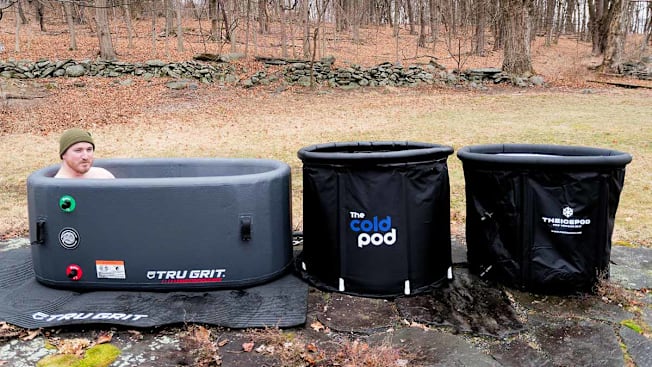We Tried 3 Ice Baths for Post-Workout Muscle Recovery
Backyard cold plunge tubs are buzzing with hype. We looked into the science to see if they’re worth the investment.
When you shop through retailer links on our site, we may earn affiliate commissions. 100% of the fees we collect are used to support our nonprofit mission. Learn more.

Ice baths, or cold plunge tubs, are having a moment. Exercise physiologists have studied cryotherapy, including the effects of ice as a post-exercise treatment, for decades, and emerging research indicates that colder water isn’t better. Instead, water at roughly 50° to 70° F and longer exposure may be the secret sauce to better post-workout muscle recovery.
- Tubs We Tried: Cold Pod XL Pod Company Pro IcePod 2.0 Tru Grit Fitness Inflatable Ice Bath
- More on Cold Plunge Tubs: Pros & Cons Contrast Baths Strength Recovery vs. Muscle Building How We Evaluated
















